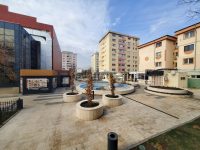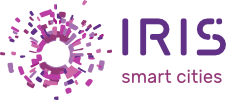
The city of Focşani in Romania’s South-East region is quickly becoming a hidden gem for Romanian tourists. Those visiting the city can walk along the historic Milcov River take an hour’s drive to the Vrancei mountains. It also serves as the capital of Vrancea County, famous for producing some of the country’s best wines since the 15th century.
Apart from its tourism credentials, the city has been working on becoming one of Romania’s best examples of a ‘smart city’ – that is, using digital technology to make traditional networks and services more efficient.
‘’Many of our projects, after implementing them, will become very attractive for other people from different cities to come to visit,’’ says Dan Cazaciuc from Focşani City Hall.
As Cazaciuc explains, the city has several projects underway. One is to improve the core issue of traffic management. He says that in the last three years the number of cars in the city has doubled. Since parking spaces in the city have not risen to meet demand, the city has struggled to manage the traffic.
“A lot of villages around the city become like satellites to the city; people are living in the villages and working in the city,’’ explains Cazaciuc.
The solution was to make commuting by bus more attractive. The bus network was redesigned to create a grid of bus routes running north-south on the city’s main boulevard, giving people a better sense of certainty of reaching their destination and avoiding any traffic jams.
Transport is also more digitised; the ticketing system was recently updated from paper to a card that people can scan. ‘’Mobility cannot go forward without decreasing the CO2 level and other means of environmental protection’’ he says. Several new electric buses were ordered alongside creating several new bike lanes.
The program of expanding public transport and active travel has so far been a success, says Cazaciuc. “We receive a lot of requests from mayors and authorities from the small villages to extend our services of local public transportation,’’ he said.
Focşani is also digitising the services the city can provide its citizens. The city’s website already offers services ranging from car registrations to requests for information. There are also plans to digitise traffic management and the public library system.
‘’We had a long way to get here,’’ explains Cazaciuc. He explains that in 2000 not a lot of people were using the internet to get information or online services
‘’We were trying to provide services but there was no demand,’’ he says. To fix this public information touchscreens were installed in several public places throughout the city loaded with services and information.
As digital life grew in Romania, these kiosks were then converted into Wi-Fi hotspots as part of the EU’s WiFi4EU program. These programs are usually co-financed between the European Union and the municipality.
Cazaciuc says they often see what successes other European cities are having. Focşani is a ‘follower city’ in the IRIS project, which brings cities together to develop smart city solutions. This collaboration Cazaciuc explains, proved vital for ideas to bring to Focşani.
“For us it was important to see where we want to go,” he explains. Visiting some of the project’s ‘Lighthouse cities’ offered them to see what projects worked and had the best potential to be replicated in Focşani. “It’s something you have to see, not just read about it.’’
For example Utrecht, one of the lighthouse cities, provided Cazaciuc and his colleagues insight into how a city can best provide digital services.
However, he is quick to point out that the best part of the project was simply talking to likeminded city planners also working to create smart cities in their home countries.
‘’We have a saying [among us]’’ says Cazaciuc. “Conferences and seminars are great – but the coffee break is the best!”







